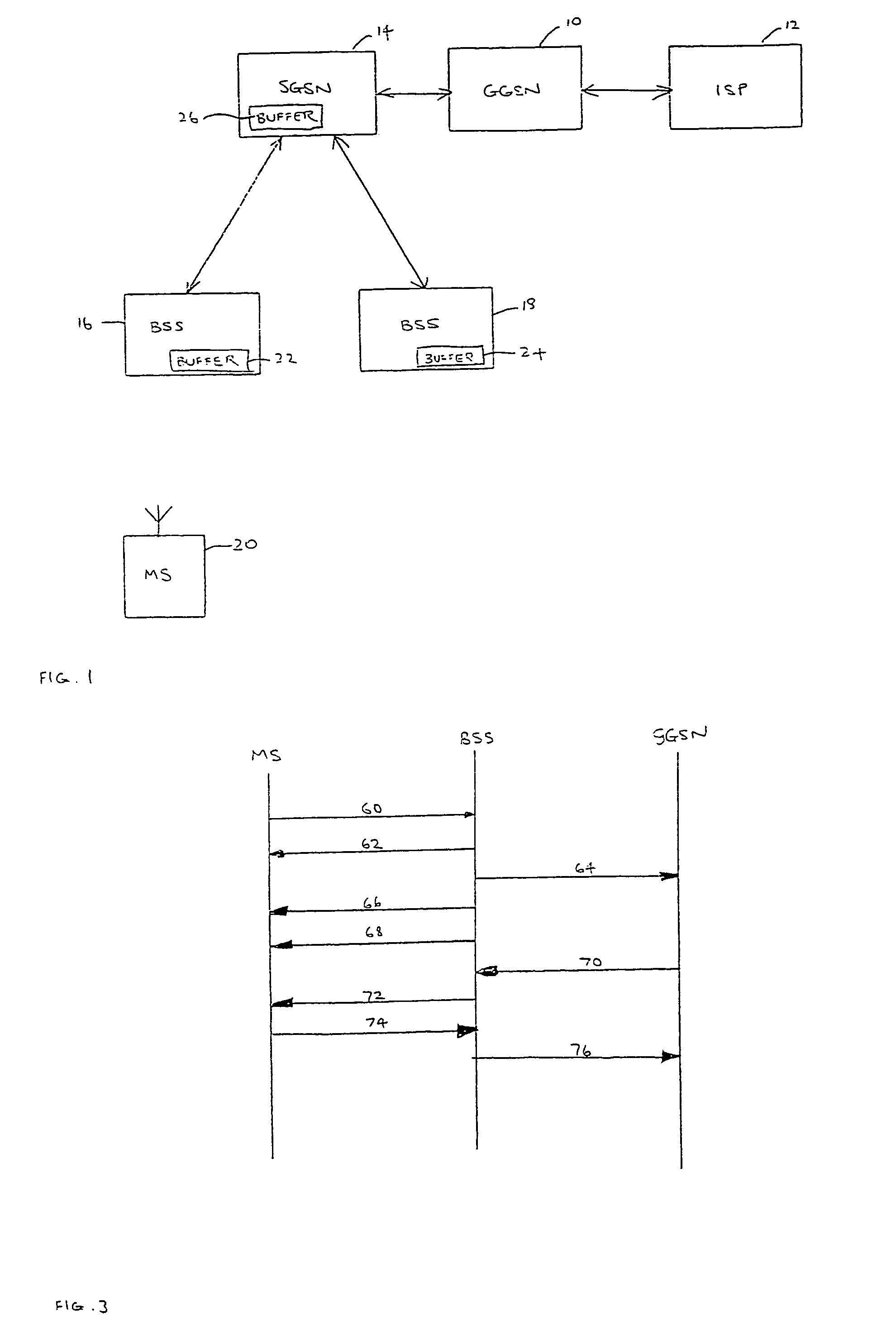Method of data preservation and minimizing reduction in data throughput in the event of a cell change
a data preservation and cell technology, applied in the field of mobile communications networks, can solve the problems of reducing the data throughput of the ms
- Summary
- Abstract
- Description
- Claims
- Application Information
AI Technical Summary
Benefits of technology
Problems solved by technology
Method used
Image
Examples
Embodiment Construction
[0026]FIG. 1 is a schematic representation of a part of a General Packet Radio Service (GPRS) mobile communications network, for example operating in accordance with the standards set by the 3rd Generation Partnership Project. The embodiment is described herein with reference to this access technology, although it will be appreciated that it is equally applicable to other access technologies.
[0027]The network includes at least one Gateway GPRS Support Node (GGSN) 10, which is the gateway to a general data communications network (not shown), for example through an Internet Service Provider (ISP) 12. Each GGSN 10 is connected to one or more Serving GPRS Support Nodes (SGSN) 14, of which only one is shown in FIG. 1.
[0028]Each SGSN is connected to a plurality of Base Station Systems (BSSs) 16, 18. It will be apparent to the person skilled in the art that a real network will include more SGSNs and BSSs than the small number illustrated in FIG. 1. However, description of those additional ...
PUM
 Login to View More
Login to View More Abstract
Description
Claims
Application Information
 Login to View More
Login to View More - R&D
- Intellectual Property
- Life Sciences
- Materials
- Tech Scout
- Unparalleled Data Quality
- Higher Quality Content
- 60% Fewer Hallucinations
Browse by: Latest US Patents, China's latest patents, Technical Efficacy Thesaurus, Application Domain, Technology Topic, Popular Technical Reports.
© 2025 PatSnap. All rights reserved.Legal|Privacy policy|Modern Slavery Act Transparency Statement|Sitemap|About US| Contact US: help@patsnap.com



